What is B2B eCommerce? Everything you need to know

The B2B eCommerce is growing exponentially around the world.
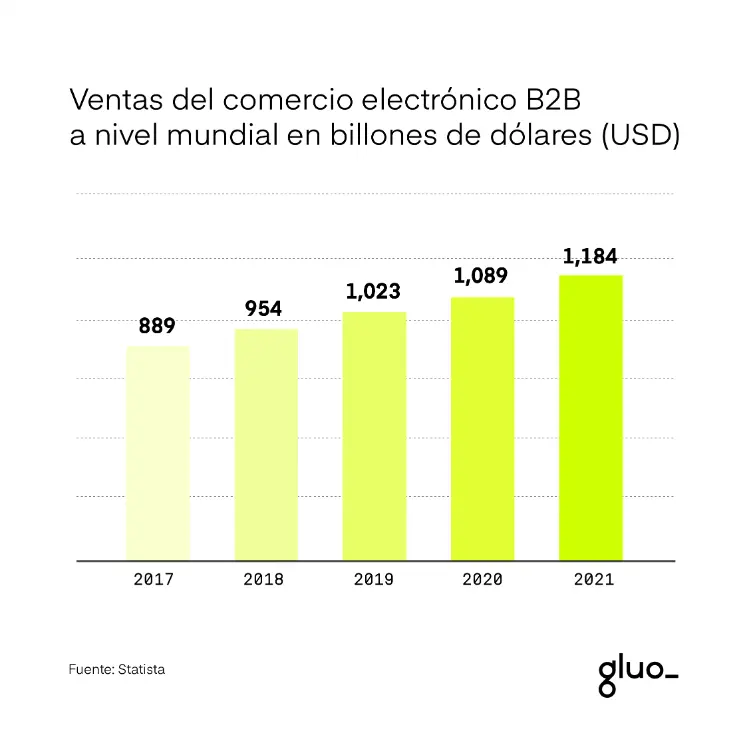
It is estimated that by 2025, B2B e-commerce in North America will be worth 4.6 trillion dollars.
Given this growth trend, it is important for B2B business leaders to start developing digital sales channel initiatives.
This will allow your company to meet the needs of current customers, stay one step ahead of the competition, reach a nascent market first, and of course, increase your business's sales.
Basically, B2B e-commerce is the sale of goods or services between businesses through digital channels.
Instead of receiving orders in traditional ways (by phone or mail), transactions are carried out digitally, either through a website or a mobile app. This helps to speed up physical sales processes, reduce costs, and increase company profits.
Advantages of opening your B2B eCommerce
Reach new customers
B2B e-commerce can help you expand your company's market by testing new geographies and expanding operations to other states or countries. By leveraging the power of search engine optimization (SEO) and investing in digital marketing campaigns that include paid ads, your site will appear first in Google searches, thus improving your brand awareness and attracting new customers.
Improve supplier and customer management
E-commerce is key to increasing your sales and profit margins while also helping you improve relationships with your customers and suppliers. Some of the crucial areas that B2B e-commerce addresses and make a big difference in customer experience include:
A simpler purchasing process.
Easier order repetition.
Fast delivery.
Efficient order tracking.
B2B e-commerce also allows for better supply management through:
More effective contact between suppliers.
Planning and forecasting increases and decreases in demand.
Automation of purchasing processes.
Smarter inventory management.
Reduction of human errors that can prevent a deal from closing.
Improve Data Analysis
E-commerce solutions provide better data analysis and reporting. With a B2B eCommerce platform, you can:
Generate different types of reports for various KPIs
Track sales effectiveness
Analyze site traffic
Monitor cart abandonment rates
Detect accounts with the most growth
Identify best-selling products
With these reports, you can also better predict your future growth and understand how your overall business is progressing.
Grow your business
B2B eCommerce helps you expand your potential market, optimize sales processes, and gain real-time data on your customers' behavior. All of this means your business can grow rapidly and not fall behind your competition.
Differences between B2B and B2C eCommerce
When we think of eCommerce, we often believe that only B2C companies can open their own online store. This is false, as there are hundreds of B2B companies that sell their products online. To open a B2B eCommerce store, it is vital to understand the needs and expectations of business buyers. While both e-commerce models seek personalization, convenience, and mobility across various channels, B2B eCommerce differs from B2C eCommerce in certain aspects.
More formal relationships
Business agreements between companies are long-term partnerships. While consumers usually look for products to meet their immediate needs, B2B companies help others succeed in the long term. Since these companies are interconnected and interdependent on each other, they develop agreements to help each other generate more revenue.
Longer buying cycles
Transactions between businesses are more complex and require more time. B2B sellers deal with smaller groups of potential customers and more contracts, budgets, and purchase orders.
Every company seeks to find trustworthy suppliers to maintain continuity and simplify purchases for their own customers. That's where your brand needs to stand out.
Multiple decision-makers
Business customers place larger orders in terms of money, which leads to the involvement of numerous stakeholders, approval processes, and specific workflows. As a result, B2B sellers require concrete workflows based on the needs of all stakeholders.
In-depth analysis of purchasing options
B2C consumers typically do not conduct complex analysis of their purchasing options.
They often buy the brand recommended by a friend or family member, the first brand they see in the supermarket, or a product they saw on social media that caught their attention.
Choosing a poor supplier has a negative impact on a company's profitability. Therefore, B2B companies usually carry out an in-depth analysis of different suppliers before completing a purchase. They analyze multiple aspects such as costs, benefits, delivery times, supplier formality, payment facilities, and opinions of other customers before making a final purchase decision.
Wholesale purchases
When the end consumer goes to the supermarket, they usually buy one or two pieces of the same product. Meanwhile, B2B companies can make large quantity purchases of the same item. When making purchases in large volumes, companies often expect significant discounts on their purchase.
Complex payment options
B2C consumers usually pay with a credit card and wait for the item to arrive at their home.
In the case of businesses, payment can be made with a line of credit, transfers, checks, or credit cards. Moreover, billing and payment conditions may differ depending on the customer, the size of the order, its value, and the number of orders over time.
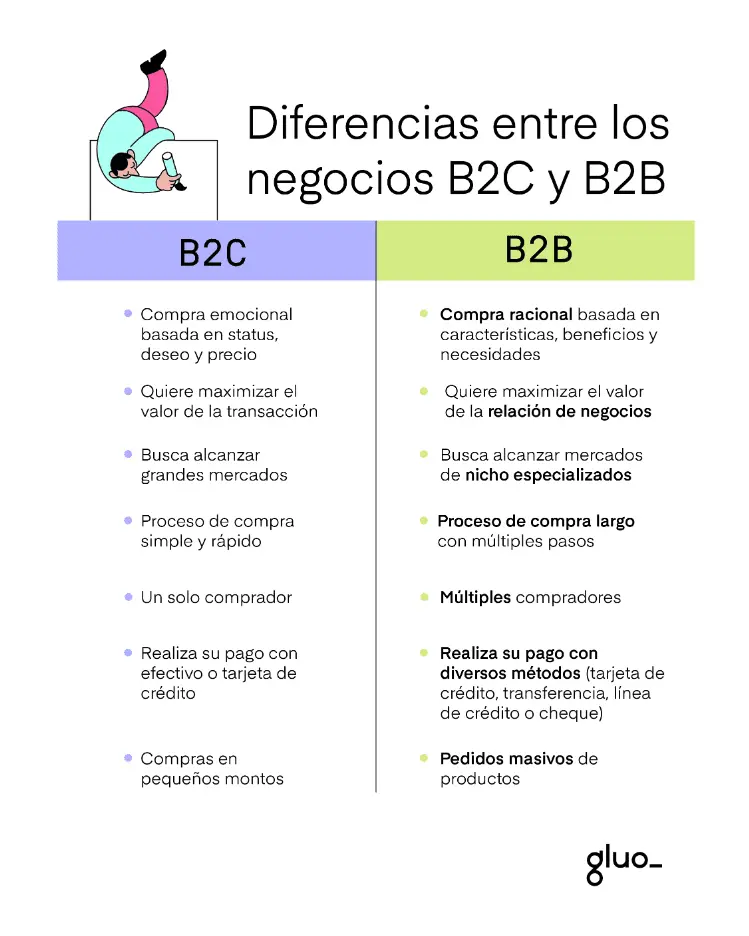
Myths of B2B eCommerce
When talking about B2B eCommerce, there are several myths that discourage business-to-business companies from opening their own digital sales channels. Here are some of them.
Few B2B companies have their own eCommerce
False. 65% of B2B companies offer online sales to their customers, according to data from McKinsey. This is mainly due to the pandemic, as face-to-face contact was limited, and companies developed their own digital channels to keep their sales processes going. Digital channels now generate more than 18 percent of all B2B company revenues, placing this channel on par with in-person sales and ahead of all other channels.

B2B buyers prefer face-to-face contact
Not so much anymore. Two-thirds of corporate customers intentionally prefer to contact their account manager digitally or remotely when given the option. eCommerce has surpassed face-to-face contact as the most effective channel.

A basic B2B eCommerce is enough
Not anymore. B2B companies are treating eCommerce as a formal channel within their sales strategy and investing in it.
People who believe in this myth approach B2B eCommerce slowly and steadily, as they assume that it will be a challenge to have digital capabilities and manage an additional channel alongside physical sales. However, the rest of the market is actively addressing these same issues.
More than 80% of companies with digital stores have the same or higher standards as in other channels, in terms of offers, product quality, service availability, shipping, deliveries, and personalized recommendations.

B2B eCommerce is only for low and recurring tickets
Not quite true. Corporate buyers already feel confident enough to complete high-volume transactions. 35% say they are willing to spend up to $500,000 USD or more in a single transaction through digital channels. Meanwhile, 15% mention feeling comfortable spending up to 1 million dollars in a single transaction.

Capabilities of a B2B eCommerce
The needs of a B2B business are different from those of a B2C business.
For this reason, B2B eCommerce sites have different capabilities than online stores aimed at the end consumer. Here we list some of the most basic capabilities that a digital commerce for businesses should have.
Price personalization
Unlike B2C eCommerce, product prices are not fixed for all customers in B2B eCommerce.
Business-to-business companies offer prices to their customers based on purchase volume, years of business relationship, previous negotiations with buyers, and other factors.
Your B2B commerce must allow you to assign different prices to each customer and company.
Wholesale discounts
In addition to the previous point, a B2B eCommerce must automatically apply discounts when purchasing in volume, so that sellers spend less time generating personalized prices for their customers within the online store.
Sending quotations
A company buyer must be able to negotiate products, prices, and purchase volume directly with their assigned seller.
Therefore, your sellers must be able to send quotations or shopping lists to their customers that respect the agreements they reached with their clients.
When the client is satisfied with their quotation, they should be able to complete their payment through eCommerce.
Multiple payment methods
As we mentioned earlier, a B2C customer usually pays for their order with a credit card.
However, in B2B sales, there are more payment methods, such as transfers, lines of credit, and even checks.
Your B2B commerce should let you accept all these types of payments.
Shopping lists
In B2B sales, companies often buy the same products in similar quantities. Repeating the same order every time a purchase has to be made consumes the buyer's time. Your user should be able to create pre-saved shopping lists with products they frequently buy to streamline the sale.
Corporate accounts
In a B2B company, each buyer and negotiator has different attributions and decision-making power. So each of your client's buyers should have different purchase permissions, such as the amount they can buy, the discounts they can acquire, or the credit they can request.
Therefore, your B2B eCommerce should allow you to manage corporate accounts and set up multiple levels of buyers with different roles and permissions.
Types of B2B e-commerce
B2B eCommerce can be classified into different categories.
B2B e-commerce
A B2B eCommerce site allows a company to sell its products or services online to other businesses.
B2B/B2C e-commerce
In this case, a B2B company sells to other businesses and end consumers from the same eCommerce site.
B2C2B e-commerce
This occurs when a company that started as B2C opens an online store to sell to businesses.
B2B eCommerce Platforms
If you're thinking about opening your own business-to-business eCommerce store, you don't have to start building it from scratch.
There are software solutions available in the market that will allow you to open your own eCommerce store easily and quickly. These solutions are called eCommerce platforms.
An eCommerce platform is software that allows you to create your online store and sell your products online. It is worth noting that there are specific solutions for opening your B2B eCommerce store.
BigCommerce
BigCommerce has a range of interesting features for B2B companies looking to open their own online store. Through this platform, your company can display different prices to each buyer. This way, you can offer each customer a different price without others knowing about those prices.
In addition, you can generate discounts that activate automatically when a customer makes a wholesale purchase.
Vtex
The Brazilian eCommerce platform has several interesting features for B2B companies looking to open their own online store.
Through VTEX, your customers can place bulk orders, request product quotes, and receive special discounts. You can even display different prices to each customer. The tool also allows you to create special product kits ready to buy.
Magento
Magento can adapt to the basic needs for a B2B eCommerce store. You can define prices based on each type of customer. It also allows you to create shopping cart discounts for specific users or companies. Your customers can request quotes directly through your online store to be reviewed by your sales team.
Examples of B2B eCommerce
3DXTECH
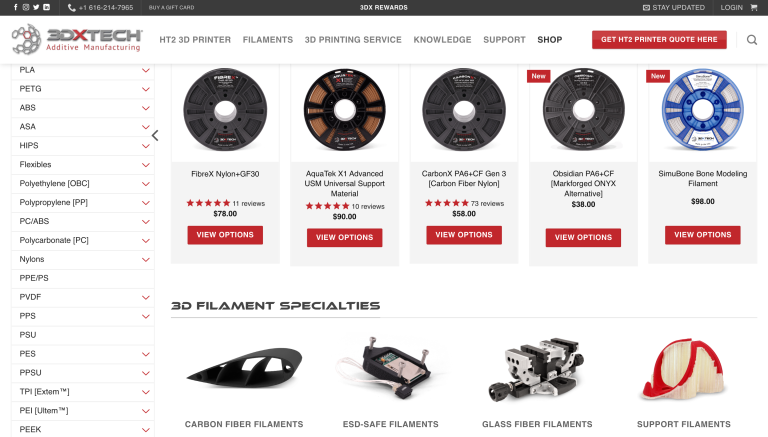
The 3D printing company 3DXTECH, specializing in carbon fiber-reinforced 3D printing filaments, is a good example of a B2B e-commerce website. Alibaba
Alibaba
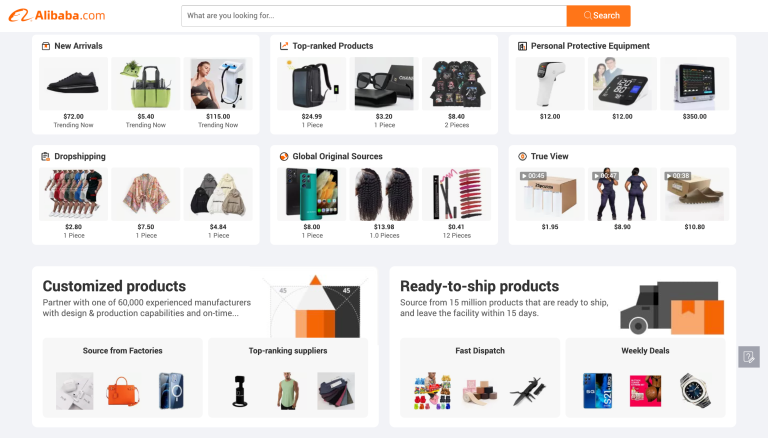
The Chinese giant Alibaba is one of the largest B2B and B2C e-commerce companies in the world. It sells products in 40 different sectors, serving more than 18 million buyers and sellers in 240 countries.
Alibaba connects buyers and sellers, so it makes money from advertisements and commissions. Its success lies not so much in the website itself, but in how the company treats the customer, which is reflected in the experience of its website.
Amazon Business
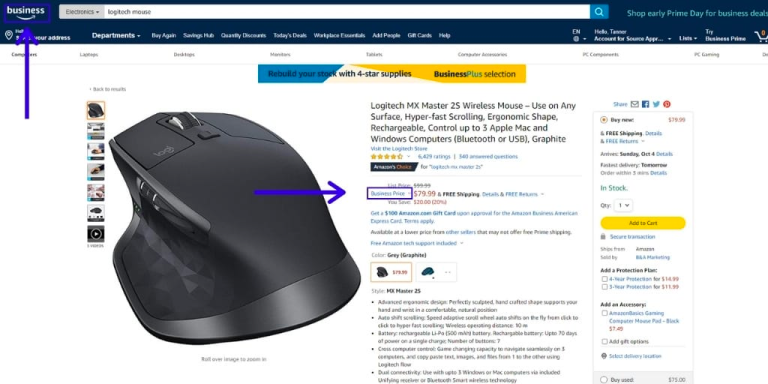
Amazon Business offers a comprehensive package that incorporates all the possible features that any B2B business could need.
ACME
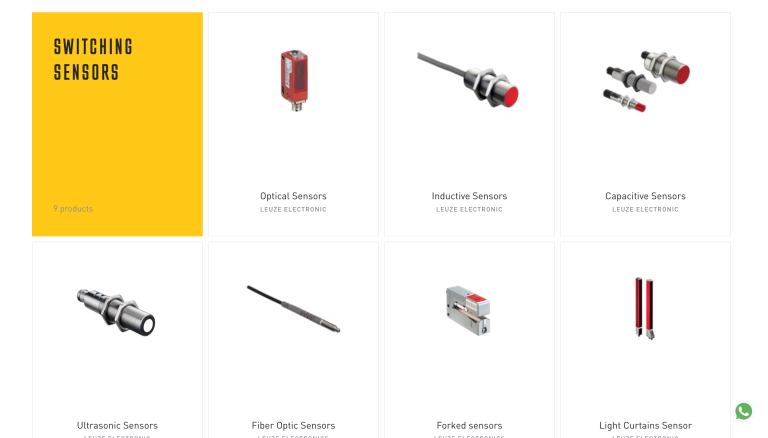
ACME is a packaging supplier for logistics operators and carriers. It has a minimalist website with a very careful design. Their B2B eCommerce site was designed with great attention to detail.
Curbell Plastics
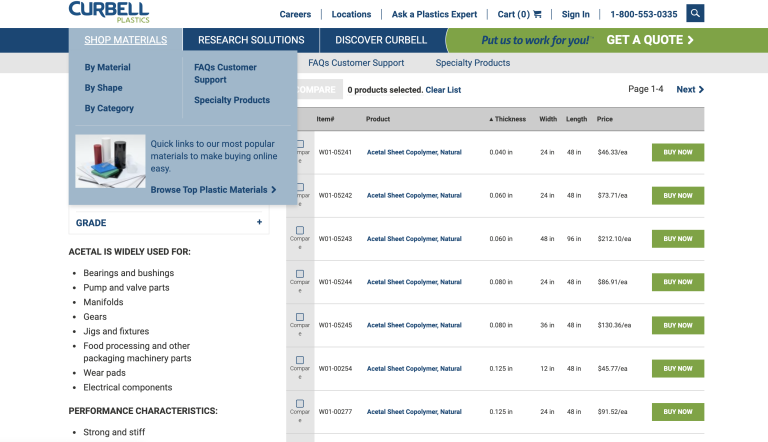
This company is one of the leading suppliers of plastic sheeting and prototyping materials in the United States and takes care of the customer experience by offering them the simplest (yet exciting) way to find their products.
7 Steps to Launch Your B2B eCommerce
To achieve this, you need to consider the following:
1. Define your needs
Start by defining the essential features: permissions, accounts, customer groups, shopping lists, payment options; the essentials.
2. Define your customers' needs
Everyone has different challenges (some are looking for self-service, chatbots, or the ability to easily review order history), so your B2B eCommerce project should take into account their pain points and desired experiences.
3. Choose a team to lead the project
Also, appoint a person in charge; this person has to lead the implementation and adoption; track KPIs; and gather input from leadership, sales, marketing, support, and production teams.
4. Consider changes in processes
If this is the first time you are implementing a B2B eCommerce platform, you may need to make structural changes to the sales processes. Consider the implications of cash flow, the roles of sales representatives, support, payments, inventory tracking; all of this could be affected.
5. Set up your B2B eCommerce MVP
Any project requires an MVP version, also known as the minimum viable product. It is a quick version of a working project and its strategy to avoid dealing with a long, delay-filled process due to its complexity.
6. Don't neglect content
The product descriptions in your B2B eCommerce must do the job of sellers, field sales representatives, and physical catalogs. You cannot leave this aspect to chance.
7. Establish a timeline
Not all projects are the same, so implementation and start-up times can vary from a few months to almost a year. However, choosing a B2B eCommerce platform with the right features accelerates time-to-market and brings you closer to ROI.


